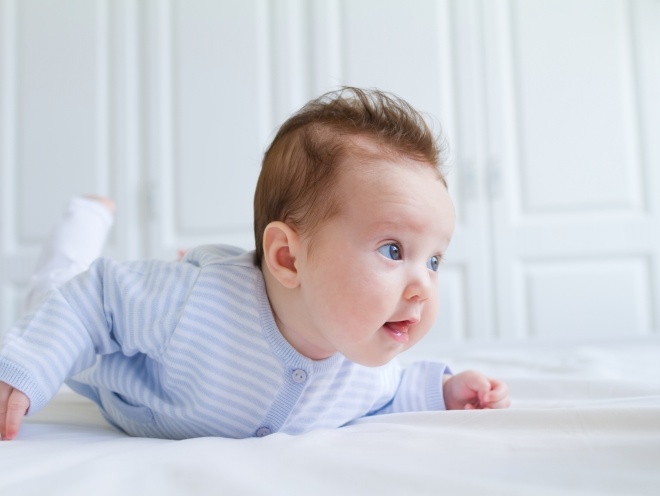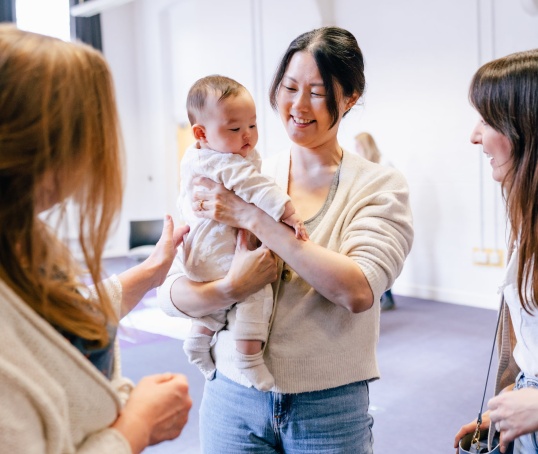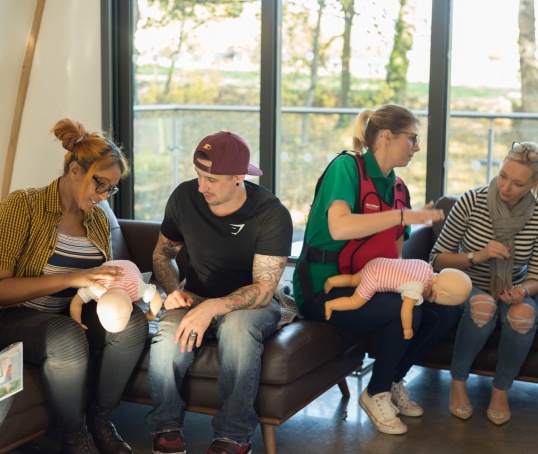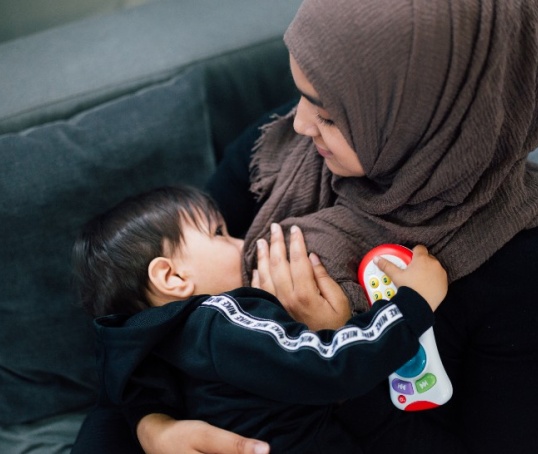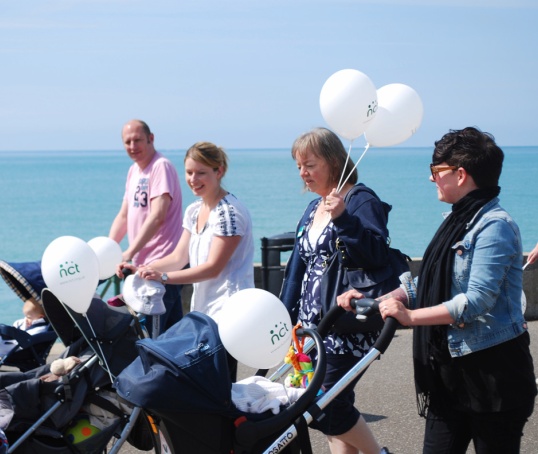It’s a common condition but something that can make a lot of parents panic. Here’s what you need to know about plagiocephaly and brachycephaly, or as they’re often known, flat head syndrome.
Plagiocephaly and brachycephaly: What are they?
When babies are a few months old, they sometimes develop a flattened head. That’s usually because they spend a lot of time lying on their backs or with their head turned to one side when they’re tiny. If this happens, it’s called flat head syndrome. Plagiocephaly and brachycephaly describe the two main types of this condition (NHS, 2018).
Plagiocephaly
The baby’s head is flattened on one side, so it looks asymmetrical. The ears may be misaligned when you look from above, and sometimes the forehead and face may bulge on the flat side.
Brachycephaly
The back of the baby’s head becomes flattened, causing the head to widen, and occasionally the forehead bulges out.
(NHS, 2018)
What are the symptoms of plagiocephaly or brachycephaly?
Other than the physical appearance of it, there are no symptoms of plagiocephaly and brachycephaly (GOSH, 2018). If your baby gets plagiocephaly or brachycephaly, try not to worry. One in five babies get some sort of flat head syndrome at some point and most get better without any treatment (GOSH, 2017; NHS, 2018).
Your GP can help you decide if your baby might need some other tests, x-rays or scans to rule out problems like craniosynostosis, where the plates of the skull join together too early (GOSH, 2017). Craniosynostosis needs surgery to correct it.
Plagiocephaly and brachycephaly: background and causes
Until they’re about one, the bones of a baby’s head are very thin and flexible, which makes them soft and easy to mould (NHS, 2018). Plagiocephaly and brachycephaly develop when constant pressure is placed on one side of the baby’s skull (GOSH, 2017).
After most births – and the baby’s trip down the birth canal – the head might look elongated for a little while. This usually corrects itself within six weeks after the birth but sometimes part of the skull might become flat (GOSH, 2018).
Why do babies develop plagiocephaly and brachycephaly?
Babies sleep on their backs: Putting your baby to sleep on their back greatly reduces the risk of sudden infant death syndrome (SIDS) (NHS, 2017). But it means that babies now spend a lot of their early lives lying on their backs.
The mattresses babies lie on are also firmer and that combination is thought to have led to an increase in the number of babies with positional plagiocephaly (GOSH, 2017). Do still put your baby to sleep on their backs though – the benefits far outweigh any negatives (The Lullaby Trust, 2019).
Tight neck muscles: Tight neck muscles can stop a baby turning their head in a particular way, putting one side of their head under more pressure (NHS, 2018).
There is pressure on the baby’s head in the womb: Sometimes in the womb, there may not be enough amniotic fluid to cushion the baby, or with twins, babies can become a bit squashed in there (NHS, 2018).
Babies are born prematurely: Premature babies are more likely to develop a flattened head because their skulls are softer than those of full-term babies. Also, premature babies tend to spend more time on their backs without being moved or picked up and they may not yet be able to move their head from side to side (NHS, 2018a).
Plagiocephaly and brachycephaly treatment
In mild cases, babies won’t need any treatment but you can help their head go back to a normal shape yourself. Try the following tips.
- Tummy time: Give your baby time on their tummy a few times each day. Tummy time helps to build the muscles they need for sitting and crawling. If your baby struggles to lift their head, roll up a towel and put it under their armpits. Put some toys nearby for them to reach out to as well. Only do tummy time when your baby is awake and alert, and when you are there to keep an eye on them (NICE, 2019).
- Adjusting their head position during sleep: This will vary the position that the head rests in. Swap ends of the cot too so they sleep on both sides of their head (NICE, 2019).
- Change the position of toys, mobiles or lights: That will encourage your baby to turn their head on to the non-flattened side.
- Varying positions: Alternate the side you hold your baby on when you feed and carry them and switch them between sloping chairs, slings and flat surfaces. This means there is no constant pressure on one side of the head (APCP, 2020). Try to keep time in the car seat or pram to a minimum.
- Physiotherapy: For babies who have trouble turning their head, physiotherapy can be very helpful.
(Tamber et al, 2016; GOSH, 2017; NHS, 2020)
There is a lack of strong evidence on how effective cranial osteopathy techniques and therapeutic strategies are (Guillaud A, et al. 2016). Similarly the use of helmets or special headbands generally aren’t recommended (NHS, 2018).
Plagiocephaly and brachycephaly and babies’ future development
Generally, flat head syndrome is seen as a purely cosmetic condition that does not have any effect on how the baby’s brain develops. Whilst it does not cause any pressure on the baby's brain (GOSH, 2017), some researchers suggest plagiocephaly may be a marker of elevated risk of developmental delays (Martiniuk et al, 2017). And others agree that the relationship between abnormal neonatal cranial shape and early developmental delays isn't very well understood.
Support for parents
Parents may hope for a support network to help them with their worries. While two UK charities do offer support this is limited to fundraising for helmets, rather than emotional or practical support.
This page was last reviewed in March 2021.
Further information
Our support line offers practical and emotional support with feeding your baby and general enquiries for parents, members and volunteers: 0300 330 0700.
You might find attending one of our NCT New Baby courses helpful as they give you the opportunity to explore different approaches to important parenting issues with a qualified group leader and other new parents in your area.
Make friends with other parents-to-be and new parents in your local area for support and friendship by seeing what NCT activities are happening nearby.
APCP (2020) Head Turning Preference and Plagiocephaly. Information for Parents and Carers. Available at: https://apcp.csp.org.uk/system/files/documents/2020-06/Plagiocephaly_V4_2020.pdf
Andrews BTand Fontana SC (2017). Correlative vs. Causative Relationship between Neonatal Cranial Head Shape Anomalies and Early Developmental Delays. Front Neurosci. 2017 Dec 19;11:708. doi: 10.3389/fnins.2017.00708. PMID: 29311788; PMCID: PMC5742118.
De Bock F, Braun V and Renz-Polster H (2017) Deformational plagiocephaly in normal infants: a systematic review of causes and hypotheses Archives of Disease in Childhood 2017;102:535-542. DOI: 10.1136/archdischild-2016-312018
GOSH. (2017) Positional plagiocephaly. Available from: https://www.gosh.nhs.uk/conditions-and-treatments/conditions-we-treat-index-page-group/positional-plagiocephaly [Accessed 9 April 2021]
Guillaud A, Darbois N, Monvoisin R, Pinsault N. Reliability of Diagnosis and Clinical Efficacy of Cranial Osteopathy: A Systematic Review. PLoS One. 2016 Dec 9;11(12):e0167823. doi: 10.1371/journal.pone.0167823. PMID: 27936211; PMCID: PMC5147986. [Accessed 9th March 2021]
Martiniuk AL, Vujovich-Dunn C, Park M, Yu W, Lucas BR.(2017) Plagiocephaly and Developmental Delay: A Systematic Review. J Dev Behav Pediatr. 2017 Jan;38(1):67-78. doi: 10.1097/DBP.0000000000000376. PMID: 28009719
NHS. (2018a) Plagiocephaly and brachycephaly (flat head syndrome). Available from: https://www.nhs.uk/conditions/plagiocephaly-brachycephaly/ [Accessed 9 April 2021]
NHS. (2020) How to keep your baby or toddler active. Available from: https://www.nhs.uk/conditions/pregnancy-and-baby/keeping-kids-active/ [Accessed 12 April 2021]
NICE (2019) Recommendations for children aged under 16 | Suspected neurological conditions: recognition and referral | Guidance | NICE. Accessed 12 April 2021
Tamber MS et al(2016) Congress of Neurological Surgeons Systematic Review and Evidence-Based Guideline on the Role of Cranial Molding Orthosis (Helmet) Therapy for Patients With Positional Plagiocephaly. Neurosurgery.;79(5):E632-E633. doi: 10.1227/NEU.0000000000001430.
The Lullaby Trust (2019) The Lullaby Trust: Evidence Base Available at: https://www.lullabytrust.org.uk/wp-content/uploads/Evidence-base-2019.pdf
